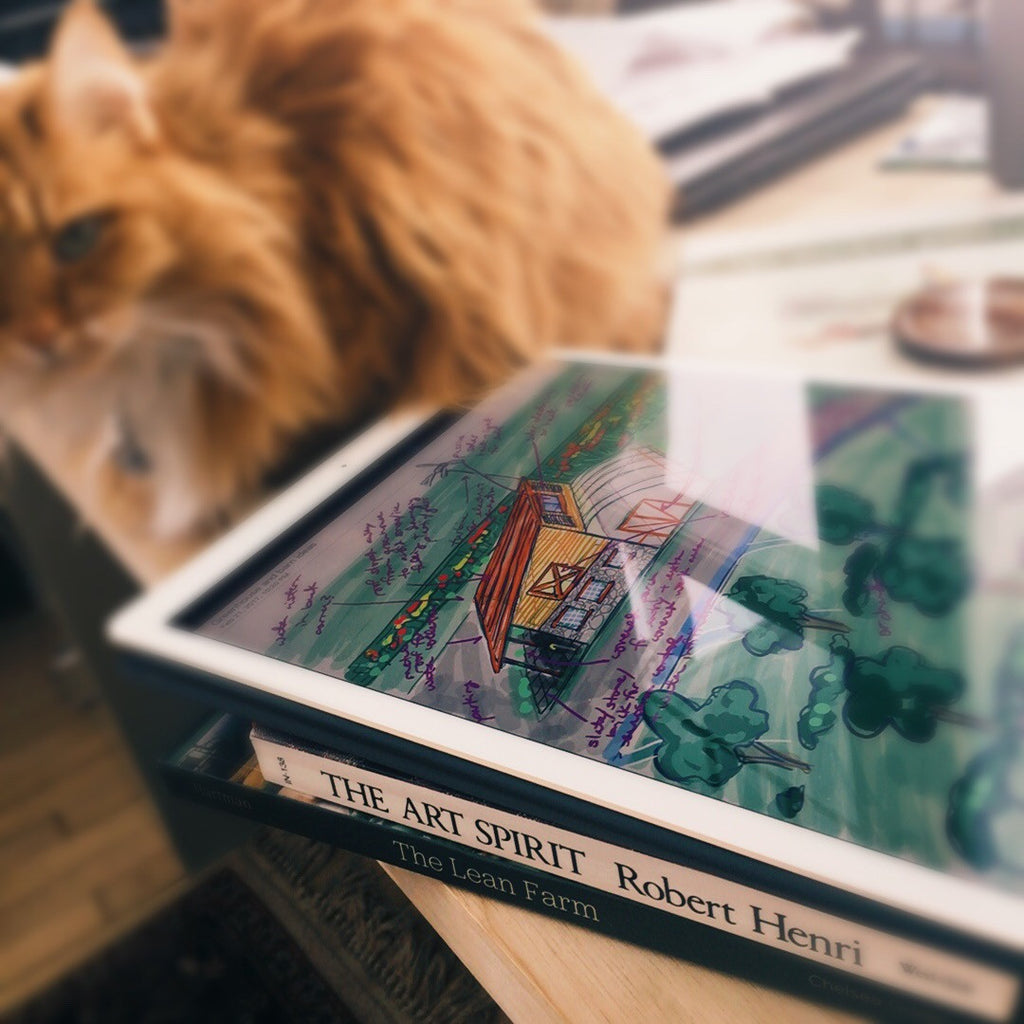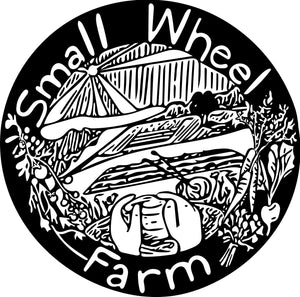The Art of Farming
By Rebecca Gramdorf

Last weekend, Peter and I attended the MOSES Conference, our first. It was inspiring to be around so many experienced organic farmers and we have returned truly inspired and energized about the upcoming season. The opportunity it afforded to both (re)connect with local farmers and learn from the rockstars of the organic world was invaluable and oh-so-timely as it turns to March now and the real work of farming begins.
One highlight of the conference, for me, was hearing Ben Hartman of Clay Bottom Farm speak. He is author of the Lean Farm, and is a proponent of designing efficiency into the farm. On his own farm, he has increased efficiency so much that as he has made his farm smaller, his family has actually realized a greater profit. He is setting limits for himself and forcing himself to farm better rather than get bigger--and it's paying off.
So, what does this have to do with us at Small Wheel Farm? Scale and design.
Our property is a total of six acres, and of that, perhaps two acres are suitable for vegetable production. Additionally, we have very little farm infrastructure on the property and will be building it out in the next few years. Peter and I have been doing a lot of dreaming about how we will build up the farm and optimize our land and resources, and Ben Hartman's talk has been a great reminder that when working under constraints of space and resources, designing efficient processes and spaces becomes critical. Our small farm can be just as successful as larger operations, but in order to achieve our goals, we will have to be more deliberate about how we farm. We will have to be creative; in a sense, we will have to be artists--and perhaps that is precisely why designing our small farm is so exciting for me.
In 1915, American painter Robert Henri described (to his students) the act of painting a portrait this way:
"Every element in the picture will be constructive, constructive of an idea, expressive of an emotion. Every factor in the painting will have beauty because in its place in the organization it is doing its living part. It will be living line, living form, living color...It is only through a sense of the right relation of things that freedom can be obtained."
When I read this passage I almost feel like Henri were describing the process of designing a farm--finding the right place for everything in the whole and making sure everything is in service to the goal. The only difference I see between this farm design and the design I do as an artist is that I will be painting with tool sheds and tractors, hoop houses and harvest bins rather than lines, colors and shapes. The farm will become a work of art when all its components work seamlessly toward the construction of our vision--when everything is in right relation and there is no excess (no waste, no distraction).
